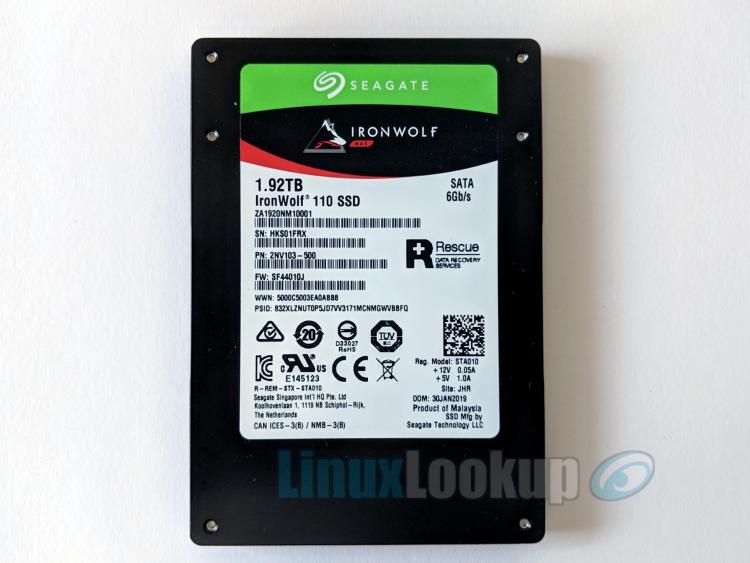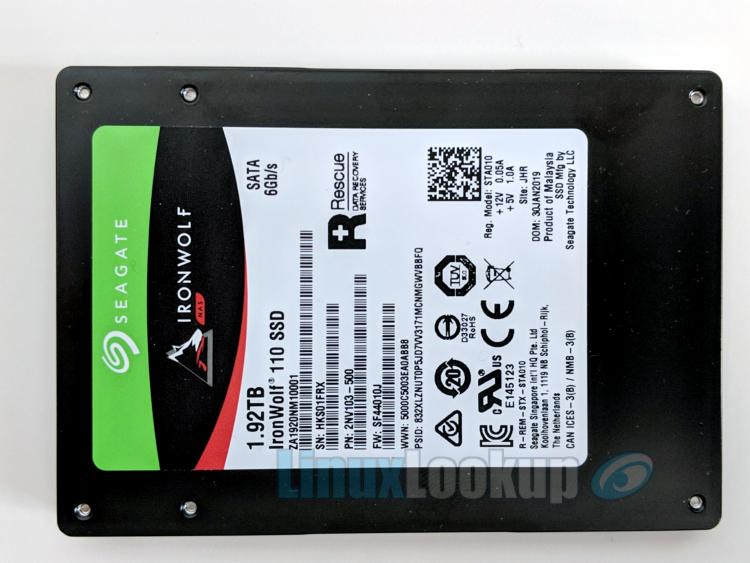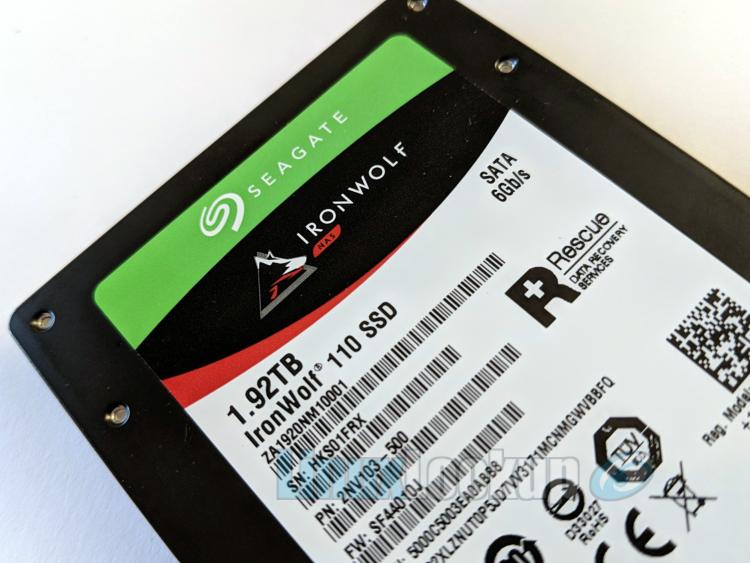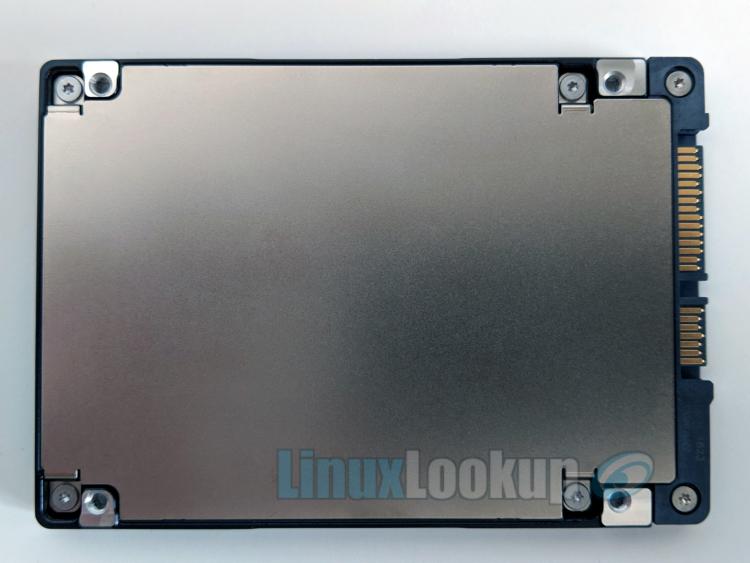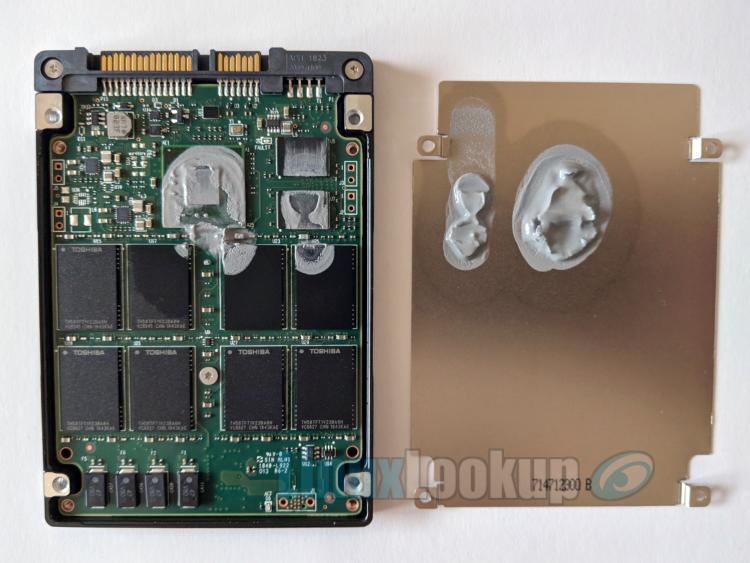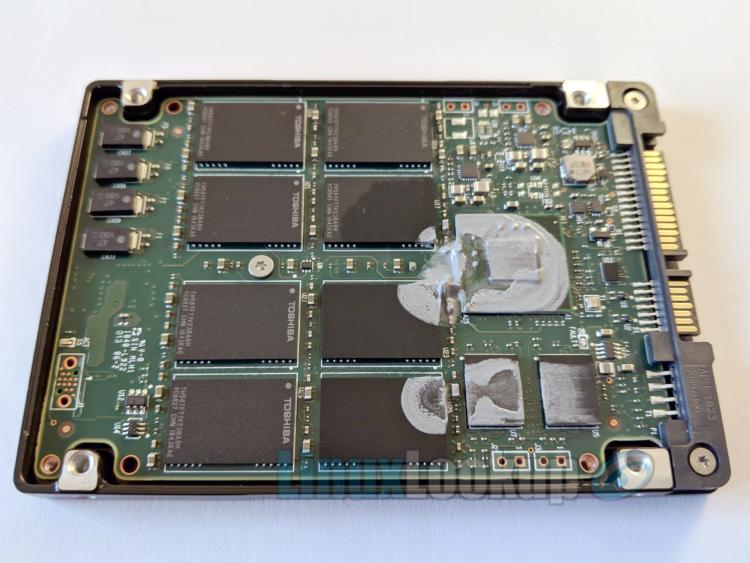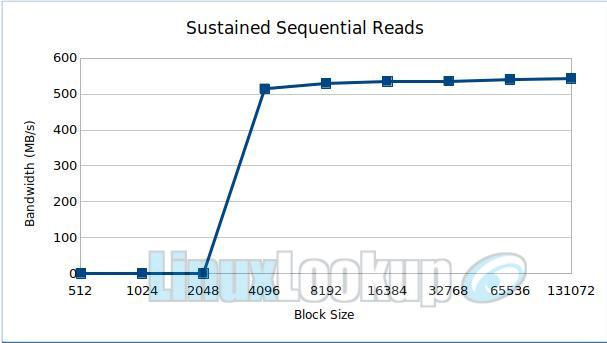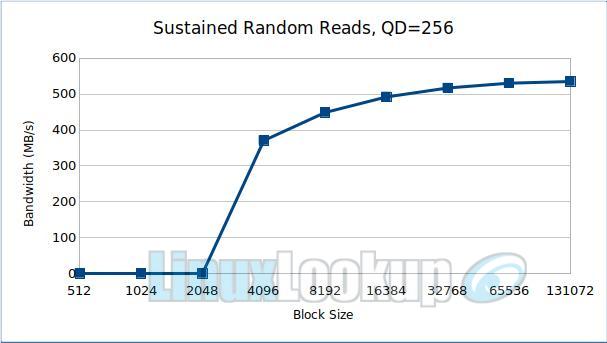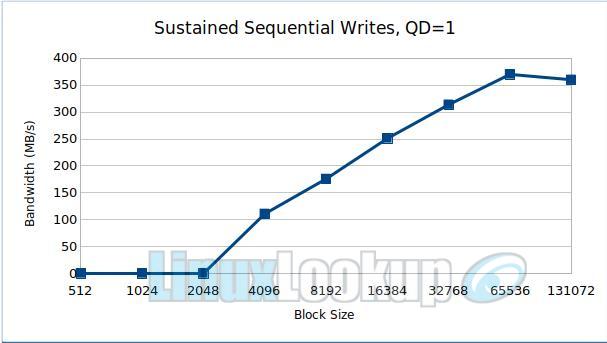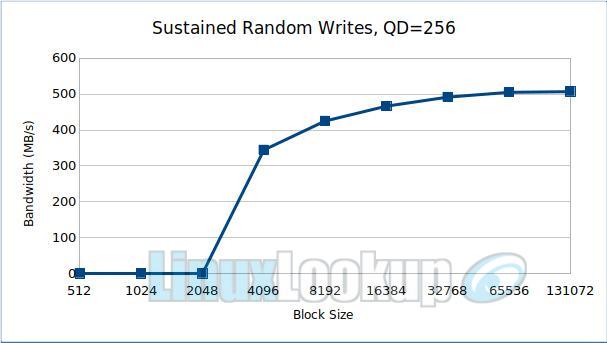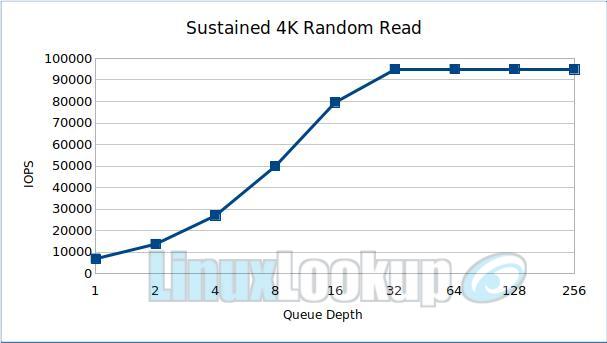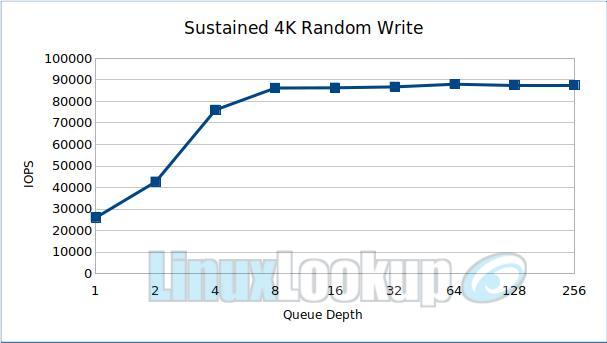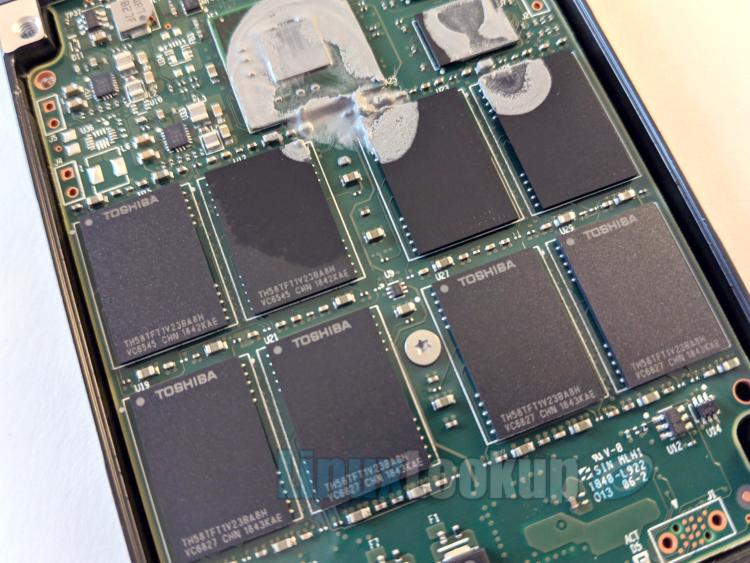Seagate Ironwolf 110 SSD for NAS Review
The Seagate IronWolf 110 SATA Soild-State-Drive stakes claim as "the world’s first purpose-built NAS SSD". Featuring enterprise-class endurance, reliability for 24/7 operation and capacities of up to 3.84TB.
In this review we'll touch on the various IronWolf 110 SATA SSD models before shifting focus onto highlights and benchmarks of the 1.92TB model.
Seagate's IronWolf 110 SSD is offered in five variants, starting with a considerable high-capacity 3.84TB model, working down to 1.92TB, 960GB, 480GB and then a 240GB model — at time of review online pricing is was at $889.56, $486.28, $276.56, $137.81 and $93.13 respectively.
Regardless of which drive capacity you choose, you'll want to pay special attention to the performance ratings as they do differ across model numbers.
In this particular review, we've benchmarked the IronWolf 110 1.92TB model (ZA1920NM10001), quoted to deliver 560MB/s sequential read with 90,000 IOPS and sequential write performance up to 535MB/s with 50,000 IOPS.
The Seagate IronWolf 110 is a Serial ATA (SATA) SSD designed specifically for Network Attached Storage (NAS) devices. Though there are NAS units capable of supporting multiple M.2 Type slots, the IronWolf 110 SSD is only available in a 2.5" (7mm z-height) physical form-factor.
Typically when doing SSD reviews I'll open the housing to provide a commentary on the controller and NAND flash memory inside. But this will not be the case for the IronWolf 110 SSD, the printed circuit board is secured to the housing back plate with some type of adhesive, preventing removal. Not wanting to risk damaging the unit I stopped there. At a quick glance we can see Toshiba TH58TFT1V23BA8H flash is present.
Finding technical documentation in regards to the controller has proven to be rather difficult as well. All I really know is that the IronWolf 110 SSD models utilize a proprietary SSD controller developed in-house by Seagate. As you can see by the photo there is a fair amount of thermal paste masking any other unique identifiers.
Realistically, the average consumer isn't interested in these technical aspects anyway, so we'll just leave it at that.
Being a NAS optimized SSD there are a few unique features, more notably, Seagate's DuraWrite, IronWolf Health Management (IHM) and AgileArray technologies. These advancements are aimed toward enhancing the endurance of NAS devices as they typically sustain heavier workloads. This isn't to say that the IronWolf 110 SSD can't be used in your average Linux Desktop computer or laptop for extremely reliable storage as well.
DuraWrite technology uses lossless compression techniques to reduce the amount of data stored on the flash. Fewer bits are written to the NAND as compared to an SSD that does not use data compression, the NAND is exercised less. This in return increases the relative endurance of the NAND flash memory and equates to a longer lifespan.
IronWolf Health Management (IHM) is embedded software which is available in select NAS operating systems. IHM monitors over 200 drive parameters that may influence drive health. Notifying users of possible prevention and intervention actions ahead of a fail event, thereby reducing the possibility of catastrophic failure and associated data loss. This feature may not be available on your NAS device, check the vendor website for supported models.
Unlike a mechanical Hard Disk Drive (HDD) there are no moving parts within a Solid State Drive. Thus, some AgileArray feature sets included on the IronWolf 110 SSD may not prove beneficial as they're geared toward enhancing performance and reliability of HDD. Seeing as the Ironwolf NAS Series offers both a HDD and SSD version, this leads me to believe the same firmware is passed down across the entire Series.
Features
Highlight summary:
- AgileArray is a set of hardware, firmware, and software features that include:
- Error Recovery Control: Prevents RAID drop off and speeds up data retries
- RAID Optimization Firmware: Improves system performance in RAID configuration
- Advanced AcuTrac Technology: Vibration tolerance for multi-bay environment
- Dual Plane Balance: Less vibration for quiet operation
- Rotational Vibration (RV) Sensors: Reduce vibration in the multi-bay enclosure
- Streaming Support: ATA-8 streaming command set, and firmware optimized to handle large sequential block transfers
- Advanced Power Management: Lower overall power consumption
- DuraWrite: Lossless data reduction technology
- IronWolf Health Management (IHM)
- 2-year data recovery services plan
- 5 year limited warranty
Specifications
- Type: 2.5-inch
- Height: 7mm
- Flash Controller: Seagate proprietary
- Flash Type: Toshiba TH58TFT1V23BA8H NAND
- Serial ATA: Transfer rate 6Gb/s (backwards compatible with 3Gb/s)
- Temperature: Operating (0°C to 70°C) Non-operating (-40°C to 85°C)
- Acoustics: 0dB
- Mean Time To Failure: 2 million hours
- Drive Endurance: 3500TB Total Bytes Written (TBW), equal to 1917GB per day for 5 years
Performance
Performance testing was done under Ubuntu 19.04 (Disco Dingo) in a stand-alone drive configuration, not as a RAID array. Factors affecting performance include: Capacity of the drive, interface of the host and overall system performance. Your results may vary.
Test System
- Processor: AMD Ryzen 7 1700X Eight-Core @ 3.40GHz (8 Cores / 16 Threads)
- Motherboard: ASUS ROG STRIX X470-F Gaming
- Memory: 64512MB (64GB DDR4)
- OS: Ubuntu 19.04
- Kernel: 5.0.0-13-generic (x86_64)
- Interface: SATA 6.0 Gb/s
- SSD Firmware Version: SF44010J
We have revised how our SSD benchmarking is performed and no longer benchmark the drive while in a Fresh-Out-of-Box (FOB) state. FOB typically is how manufactures specify I/O performance in advertising because the drive has yet to endure any sustained workload and initial performance benchmarks from a FOB state will result in uncharacteristically high measurements.
To provide more accurate measurements we precondition the drive to a Steady state before running our benchmarks. Steady state is achieved by issuing a set of random and sequential preconditioning operations. Though this process takes several hours, the benchmark results are more consistent and produce real-world values.
Advertised performance
- Model: ZA1920NM10001
- Sequential Read: 560MB/s with 90,000 IOPS
- Sequential Write: 535MB/s with 50,000 IOPS
Sequential Reads compared to Random Reads with Identical Block Sizes
Sequential Writes compared to Random Writes with Identical Block Sizes
4K Random Read Performance with Varying Queue Depths
4K Random Write Performance with Varying Queue Depth
Timings of device Reads
This measurement is an indication of how fast the drive can sustain sequential data reads under Linux, without any filesystem overhead. Timing buffered disk reads: 1472 MB in 3.00 seconds = 490.01 MB/sec.
Gallery
Conclusion
The Good - Pros- Several NAS specific technologies make this drive advantageous over other brands
- Drive endurance rating is exceptional; equal to 1917GB per day for 5 years
- Can be paired as a Cache drive to an Ironwolf HDD RAID array
- Durawite increases flash endurance while preventing over-provisioning
- Large capacity 1.92TB SSD
- Includes 2-year data recovery services plan
- 5-year limited warranty
The Bad - Cons
- IronWolf Health Management (IHM) was listed as "coming soon" at product launch
The Ugly - Issues
- N/A
The Verdict - Opinion
Seagate's Ironwolf 110 SSD for NAS offers good performance along with high-capacity storage options. Perfect for fully populating an all flash NAS Storage array, or reaping the benefits in a mixed configuration of Ironwolf mechanical Hard Disk Drives and Solid State Drive Caching.
